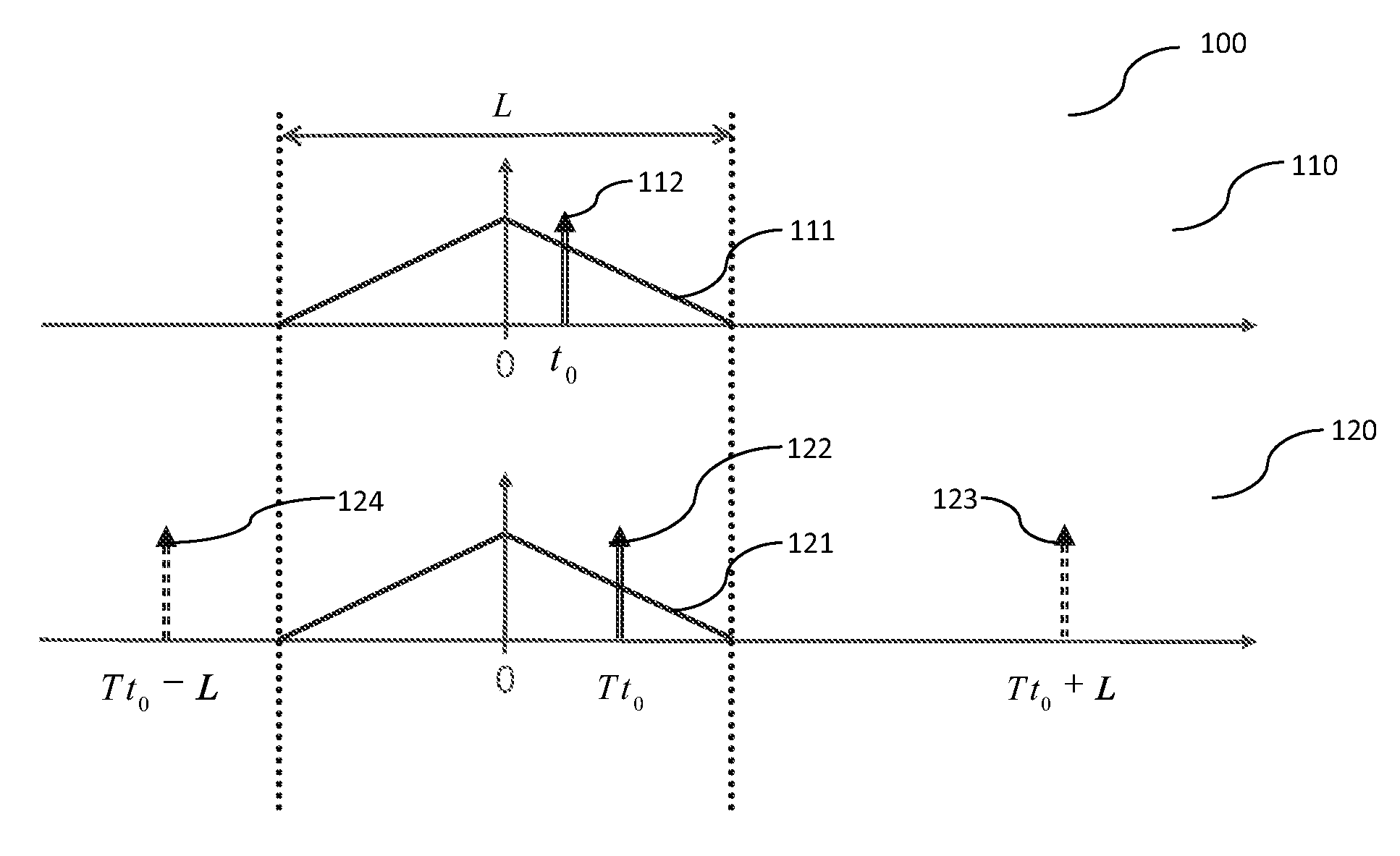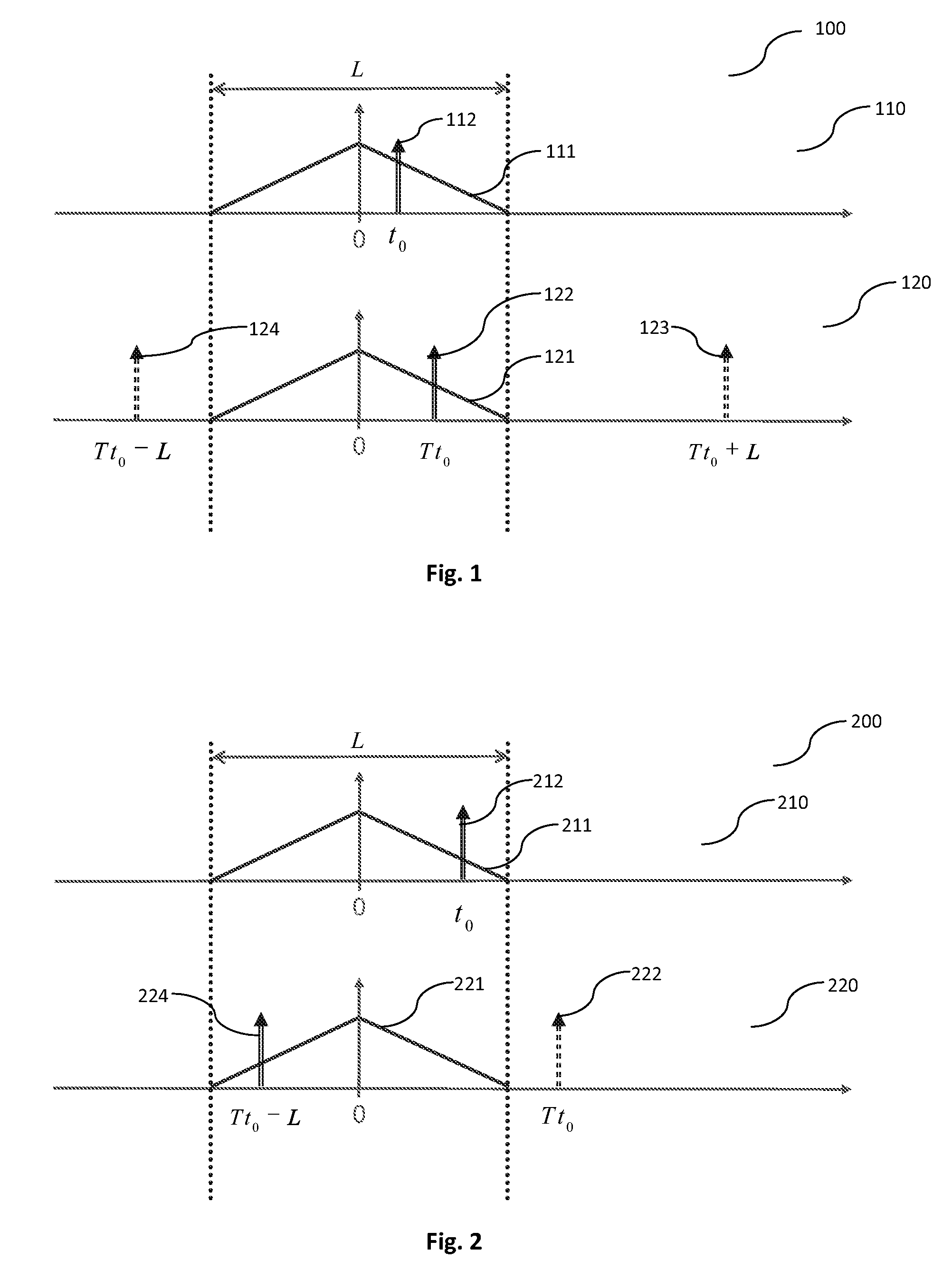Harmonic transposition
- Summary
- Abstract
- Description
- Claims
- Application Information
AI Technical Summary
Benefits of technology
Problems solved by technology
Method used
Image
Examples
first embodiment
[0077]To obtain an analysis / synthesis window pair that suppresses aliasing for even transposition factors, several embodiments will be outlined in the following. the windows or prototype filters are made long enough to attenuate the level of the first side lobe in the frequency response below a certain “aliasing” level. The analysis time stride Δta will in this case only be a (small) fraction of the window length L. This typically results in smearing of transients, e.g. in percussive signals.
second embodiment
[0078] the analysis window va(n) is chosen to have dual zeros on the unit circle. The phase response resulting from a dual zero is a 360 degree phase shift. These phase shifts are retained when the phase angles are multiplied with the transposition factors, regardless if the transposition factors are odd or even. When a proper and smooth analysis filter va(n), having dual zeros on the unit circle, is obtained, the synthesis window is obtained from the equations outlined above.
[0079]In an example of the second embodiment, the analysis filter / window va(n) is the “squared sine window”, i.e. the sine window
v(n)=sin(πL(n+0.5)),0≤n<L
convolved with itself as va(n)=v(n)v(n). However, it should be noted that the resulting filter / window va(n) will be odd symmetric with length La=2L−1, i.e. an odd number of filter / window coefficients. When a filter / window with an even length is more appropriate, in particular an even symmetric filter, the filter may be obtained by first convolving two sine ...
PUM
 Login to View More
Login to View More Abstract
Description
Claims
Application Information
 Login to View More
Login to View More - R&D
- Intellectual Property
- Life Sciences
- Materials
- Tech Scout
- Unparalleled Data Quality
- Higher Quality Content
- 60% Fewer Hallucinations
Browse by: Latest US Patents, China's latest patents, Technical Efficacy Thesaurus, Application Domain, Technology Topic, Popular Technical Reports.
© 2025 PatSnap. All rights reserved.Legal|Privacy policy|Modern Slavery Act Transparency Statement|Sitemap|About US| Contact US: help@patsnap.com



